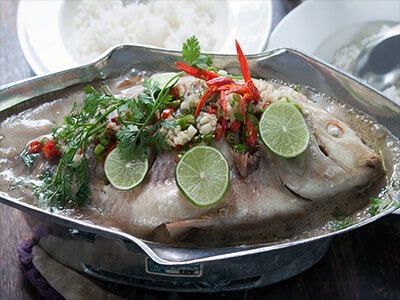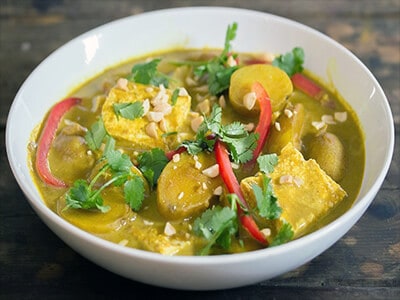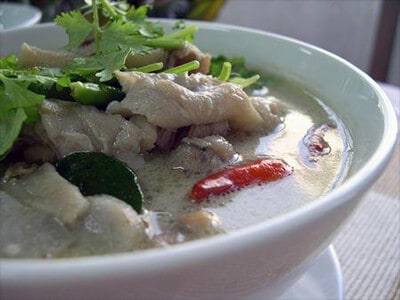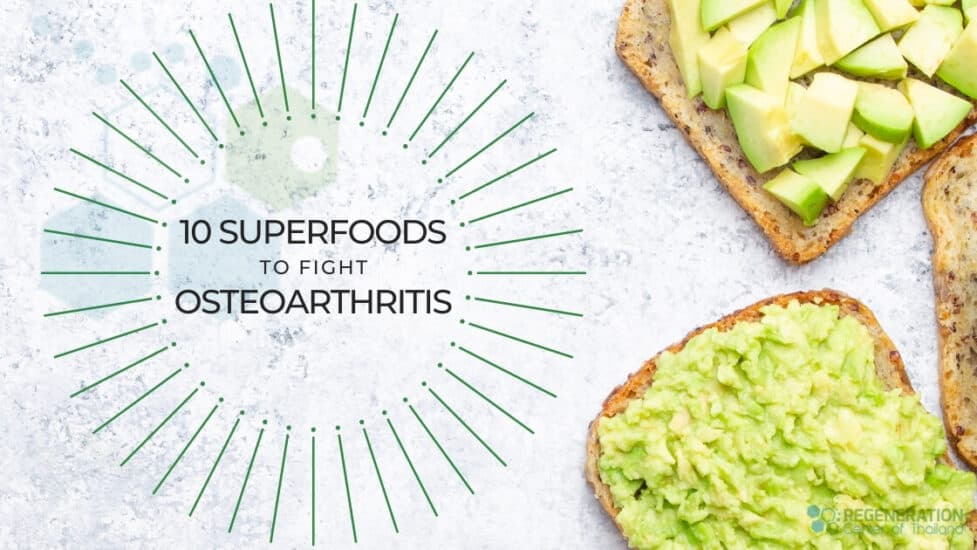Osteoarthritis (OA) is the most common joint disease affecting middle-aged to older adults in 2024. OA and joint arthritis are typically thought of as a “wear and tear” condition of the joints. Still, new research has shown that OA disease affects the joint’s entirety, including joint lining, cartilage, ligaments, and bone. OA is indeed much more common in the elderly population, but it just wouldn’t be accurate to say that the joints are only “wearing out.” OA is often characterized by the breakdown of the cushioning cartilage, degeneration of ligaments/tendons, rapid bony changes in the joints, and various degrees of wide joint inflammation in the living joint synovium lining.
Osteoarthritis usually develops in the hand joints, wrists, shoulders including rotator cuff injuries, knees, hips, back, and feet. Its believed that nearly 50% of OA cases develop in the knee, with about 22% developing osteoarthritis in the hips. OA is of the leading causes of disability in the world. Luckily, there are better, more effective ways to slow down its progression and treat osteoarthritis inflammation using these ten arthritis-fighting superfoods in modern times.
Anti-Inflammatory Benefits of Flaxseed
Is Flaxseed one of the newest wonder food? Preliminary clinical studies show that Flaxseed can help fight osteoarthritis, heart attacks, diabetes, and even some types of cancers. Those who usually eat healthy fats for weightloss are probably already aware of the benefits of taking Flaxseed. For the rest of us, Flaxseed has emerged as a must-have superfood that should be immediately added to your diet. [1] Flaxseed are extremely rich in omega-3 fatty acids and offers many health benefits beyond fighting arthritis. Flaxseed has also been shown to help reduce the risk of developing type 2 diabetes and high cholesterol. To achieve the maximum benefits from taking Flaxseed, add some crushed flaxseed as a topping to foods you already love, like salads, cereals, and açaí bowls. Flaxseed can also blend it into drinks and smoothies, or used as a healthy topping to a cup of yogurt.
Eat More Fish – The Arthritis Diet

Steamed Thai fish with chili lime sauce
Fish is another popular superfood filled with healthy omega-3 fatty acids and vitamins such as B2 (riboflavin). Vitamin D. Fishes are also a great source of many minerals, including calcium,phosphorus, magnesium, iron, zinc, iodine, and potassium. If you are not eating fish already, consider adding it to your regular diet at least a few times every week to help fight off osteoarthritis pain in the knee. Many types of fish are packed full of Omega-3 fatty acids, which are well known for their incredible ability to fight systemic inflammation and reduce swelling and pain in the joints. For people with osteoarthritis, Omega-3s can also be used to reduce joint stiffness and discomfort from being stuck in the same position for too long. Do keep in mind that not all fishes are created equal.[2] Some preferred types of fish include salmon, tuna, herring, mackerel, trout, and sardines. For optimal results, be sure to buy fresh, organically raised fish.
Turmeric and Curcumin – The Osteoarthritis Diet

Turmeric and Vegetable Thai Curry
Turmeric and its most active compound, curcumin, offer many scientifically-backed health benefits. Although the ingredient is not popular in western dishes, it is trendy in south Asian cuisines and curries. Scientists have noted that Turmeric and curcumin is a simple spice with superfood powers. Its anti-inflammatory properties alone make it a perfect option for those looking to reduce symptoms of osteoarthritis. The secret ingredient in Tumeric spice is curcumin, which essentially blocks inflammation from forming, rather than just dealing with it after the fact. [3] Cooking with turmeric might is usually the best option as curries are easy to prepare. Still, for those who want the benefits of Turmeric without the curries, curcumin supplements might be a good option.
Extra-Virgin Olive Oil has Anti-Inflammatory Properties
Extra-Virgin Olive oil is widely recognized as one of the healthiest oils in the world. If you like to cook with butter, consider swapping in some EVOO instead. Olive oil is full of dozens of anti-inflammatory properties such as oleocanthal and omega-3 fatty acids that can reduce pain and swelling in hip joints. EVOO is also better for the heart and the waistline when compared to margarine or butter. Keep in mind that Regular olive oil is usually very refined and stripped of the vital nutrients and antioxidants.
In comparison, Extra-Virgin Olive Oil uses a natural extraction process to retain all the essential nutrients and antioxidants from the olive fruit. EVOO can also help reduce bone loss with aging. Clinical studies found that EVOO inhibits bone reabsorption and increases bone formation.[4] The results found that people who consume the highest amount of Extra Virgin Olive Oil had a 53% reduction in the risk of having bone fractures. Learn more foods that boost stem cells naturally.
Eat More Garlic – Psoriatic Arthritis Diet

Spicy garlic shrimp in Thai lemon lime sauce
Garlic is a delicious addition to just about any dish. Like its cousin the onion, Garlic contains diallyl disulfide, an anti-inflammatory compound that has been shown to limit pro-inflammatory cytokines. Garlic’s cytokines can help us fight systemic inflammation and prevent cartilage damage and joint pain from arthritis. Garlic has many other benefits, including being antiviral properties, antibacterial, antiprotozoal and antifungal properties. Garlic is also known to enhance the natural immune system response while suppressing any negative autoimmune responses. [5] Throughout history, Garlic has been used for treatment in a wide range of conditions, including upper respiratory infections, sinusitis, and fungal infections. Garlic is so versatile so that you can incorporate it into your diet in a variety of ways. For example, adding freshly minced Garlic to vegetable or meat dishes, roasting whole garlic cloves to use them as a topping on pizza. If Garlic in food is not your thing, concentrated garlic supplements are also available.
Green Tea vs Joint Pain – Rheumatoid Arthritis Diet
For centuries, green tea has been used as a superfood. Modern research has found that patients with rheumatoid arthritis (RA) can benefit from regularly drinking green tea. Green tea is known to carry many health benefits, including helping to slow down osteoarthritis progression. According to the Arthritis Foundation, green tea also helps fight free radicals, which are compounds in our body that damage the cells. Green tea is an excellent source of (EGCG) epigallocatechin 3-gallate polyphenol, which has potent antioxidant effects. EGCG reduces the activity of TAK1 protein that plays a vital role in the response of cytokines responsible for triggering autoimmune response and inflammation resulting in the tissue damage seen in patients with RA. While some prefer being served cold or hot, green tea is filled with anti-inflammatory properties and antioxidants, which can reduce the speed at which our joint cartilage degenerates and limit joint pain swelling.[6] Green tea has tons of other health benefits, so adding a cup of anti-arthritis green tea to your diet can be beneficial for your overall health.
Broccoli & Sulforaphane vs Osteoarthritis
There have been dozens of studies on the benefits of Broccoli and its crucial compound sulforaphane. From helping children with autism spectrum, prostate cancer, heart disease, and other immune disorders such as lupus. The primary reason is that Broccoli’s antioxidant effects have shown the ability to change the environment on the cellular level from one that promotes disease to one that promotes healing. Research into the benefits of Broccoli suggests that it may stop osteoarthritis from progressing. Broccoli contains vital minerals and vitamins, like Calcium, vitamin C & vitamin K. Broccoli also contains sulforaphane, which has shown to reduces swelling and inflammation in the joints after a sports related injury. Eating Broccoli can help patients diagnosed with knee osteoarthritis by protecting the knee cartilage thanks to its bioactive constituent isothiocyanates, which can reach the synovial joint fluid in concentrations sufficient to make a biological impact on the articular joints, and change the synovial fluid protein profile overall. Like all produce, Broccoli is most effective when it is fresh and raised organically. Frozen broccoli can also be valuable as it still contains large quantities of the essential nutrients that make it a powerful osteoarthritis-fighting food. [7] Please note that some cruciferous vegetables like broccoli have extra fibre that can cause patients diagnosed with pulmonary fibrosis or COPD to have indigestion issues or bloating caused by the extra gas generated in the digestive system.
Onions Can Help Prevent Inflammation
Onions aren’t just another flavor enhancer for your favorite dishes. Onions are very low in calories, have almost no fat, and are full of nutritional components that fight arthritic inflammation-related conditions. Like Garlic and leeks, onions are part of the allium family tree. Onions are also one of the best sources of flavonoids, which are antioxidants that destroy dangerous free radicals before they get a chance to cause damage. One specific flavonoid in onions, called quercetin, helps to inhibit inflammation-causing prostaglandins, leukotrienes, and histamines in rheumatoid arthritis (RA), osteoarthritis (OA) and can help reduce the risk of heart failure by lowering low-density lipoprotein (LDL), better known as bad cholesterol and help prevent the progression of cancers.[8] One of the most potent compounds in onions is gamma-L-glutamyl-trans-S-1-propenyl-L-cysteine sulfoxide (GPCS)can also give a boost to bones by inhibiting premature bone loss and preventing osteoporosis. There are many types of onions, making great ingredients in cooking dishes or raw toppings. Some popular varieties include traditional red onions, white onions, green onions, yellow onions, shallots, and leeks. If you don’t really like the taste of onions, try sautéing them in a dash of EVOO to produce a milder flavor.

Thai Style Ginger & Garlic Soup
Health Benefits of Ginger for Arthritis
Do you add ginger to your dishes? Maybe the concentrated forms of ginger should be in your medicine cabinet. Besides being a delicious spice, ginger is often used to enhance treats, diminish nausea, soothe upset stomachs, help with pain, and reduce inflammation. Like most superfoods on this list, ginger contains components that can reduce joint inflammation and pain caused by osteoarthritis. Ginger contains several chemical substances such as leukotrienes that fight joint inflammation. Ginger also contains the chemical salicylate, which our body converts into salicylic acid. Salicylic acid is used as an anti-inflammatory agent for treating peripheral nerve damage and is used extensively to ease pain and discomfort. Salicylic acid also elevates CDK-5 levels and reduces ischemia thanks to its cell signaling abilities and neuroprotective pathways that assist motor neurons prevent our nerve cells from making certain prostaglandins lipids that result in the sensation of pain.[9] Ginger has long been considered a valuable spice in Thai food. The ginger root is very inexpensive and can be found in nearly every grocery store, making it easily accessible for all. Ginger can be added to many dishes or boiled to make a delicious ginger-infused tea.
Management of Osteoarthritis with Avocados
Initially, the avocado was considered to be a vegetable but was later classified as a fruit. Avocados are delicious and very beneficial in slowing down osteoarthritis. Avocados are rich in vitamins B6, vitamin B12, vitamin C, vitamin D, vitamin E, vitamin K, β-carotene, lutein, monounsaturated fatty acids, fiber, folate, and minerals such as Calcium, potassium, iron, magnesium & copper. These components help the avocado offer a wide variety of benefits, including anti-inflammatory, anti-aging, antioxidant, and cartilage protective (chondroprotective), making it especially beneficial for people with osteoarthritis who are having inflammatory responses in the synovial fluid. This negative inflammatory response is usually mediated by pro-inflammatory molecules in the body, including prostaglandins, prostaglandin E2, interleukins, and cytokines. Several clinical studies have shown that the ingredients inside an avocado can inhibit the undesired expression of pro-inflammatory molecules (E2, IL-1β, COX-2) in the cartilage, thereby reducing patients’ pain with osteoarthritis. Avocados are another food that helps joint pain also contains large amounts of monounsaturated fat, which can also help lower inflammation in the joints.[10] Avocados can be eaten in various ways, including salads, sandwiches, or whole fruit. Also worth noting that avocado oil is one of the healthiest types of oil that can help improve the cardiovascular system and reduce the risk of liver disease, heart failure or brain strokes.
The Regeneration center believes that if you or a loved one are overweight, combining frequent exercise with a healthy diet is the most effective method of reducing joint pain. For some patients with chronic conditions, a combination of functional medicine and stem cell therapy for arthritis can also offer significant benefits through rapid anti-inflammatory effects to heal and lessen joint pain. When MSCs+ cells are injected into or near damaged joints, they try to eat unprocessed organically grown foods to optimize the intake of superfoods and micronutrients. Patients who are on a renal diet or diagnosed with diabetic nephropathy, kidney failure and PKD should avoid avocados and guacamole, because avocados are a very rich source of potassium. Our institute of stem cells & regenerative medicine recommends that before you start a new diet, please discuss the plan with your primary GP, rheumatologist, or dietitian.
Published Clinical Citations
[1] ^ Savaş, B. B., Alparslan, G. B., & Korkmaz, C. (2019). Effect of flaxseed poultice compress application on pain and hand functions of patients with hand osteoarthritis. Clinical rheumatology, 38(7), 1961–1969. https://doi.org/10.1007/s10067-019-04484-7
[2] ^ Hill, C. L., March, L. M., Aitken, D., Lester, S. E., Battersby, R., Hynes, K., Fedorova, T., Proudman, S. M., James, M., Cleland, L. G., & Jones, G. (2016). Fish oil in knee osteoarthritis: a randomised clinical trial of low dose versus high dose. Annals of the rheumatic diseases, 75(1), 23–29. https://doi.org/10.1136/annrheumdis-2014-207169
[3] ^ Daily, J. W., Yang, M., & Park, S. (2016). Efficacy of Turmeric Extracts and Curcumin for Alleviating the Symptoms of Joint Arthritis: A Systematic Review and Meta-Analysis of Randomized Clinical Trials. Journal of medicinal food, 19(8), 717–729. https://doi.org/10.1089/jmf.2016.3705
[4] ^ Nsir, H., Szychlinska, M. A., Cardile, V., Graziano, A., Avola, R., Esafi, H., Bendini, A., Zarouk, M., Loreto, C., Rapisarda, V., Castrogiovanni, P., & Musumeci, G. (2018). Retraction notice to Polar and apolar extra virgin olive oil and leaf extracts as a promising anti-inflammatory natural treatment for osteoarthritis. ACTHIS_119_4 (2017) 407-416. Acta histochemica, 120(1), 64. https://doi.org/10.1016/j.acthis.2017.08.001
[5] ^ Dehghani, S., Alipoor, E., Salimzadeh, A., Yaseri, M., Hosseini, M., Feinle-Bisset, C., & Hosseinzadeh-Attar, M. J. (2018). The effect of a garlic supplement on the pro-inflammatory adipocytokines, resistin and tumor necrosis factor-alpha, and on pain severity, in overweight or obese women with knee osteoarthritis Foods that help arthritis Phytomedicine : international journal of phytotherapy and phytopharmacology, 48, 70–75. https://doi.org/10.1016/j.phymed.2018.04.060
[6] ^ Comblain, F., Barthélémy, N., Lefèbvre, M., Schwartz, C., Lesponne, I., Serisier, S., Feugier, A., Balligand, M., & Henrotin, Y. (2017). A randomized, double-blind, prospective, placebo-controlled study of the efficacy of a diet supplemented with curcuminoids extract, hydrolyzed collagen and green tea extract for rheumatoid arthritis diet. BMC research, 13(1), 395. https://doi.org/10.1186/s12917-017-1317-8
[7] ^ Davidson, R., Gardner, S., Jupp, O., Bullough, A., Butters, S., Watts, L., Donell, S., Traka, M., Saha, S., Mithen, R., Peffers, M., Clegg, P., Bao, Y., Cassidy, A., & Clark, I. (2017). Isothiocyanates are detected in human synovial fluid following broccoli consumption and can affect the tissues of the knee joint. Scientific reports, 7(1), 3398. https://doi.org/10.1038/s41598-017-03629-5
[8] ^ Yang, H. J., Kim, M. J., Qiu, J. Y., Zhang, T., Wu, X., Jang, D. J., & Park, S. (2019). Rice Porridge Containing Onion Root Water Extract Alleviates Osteoarthritis-Related Pain Behaviors, Glucose Levels, and Bone Metabolism in Osteoarthritis, 11(7), 1503. https://doi.org/10.3390/nu11071503
[9] ^ Mozaffari-Khosravi, H., Naderi, Z., Dehghan, A., Nadjarzadeh, A., & Fallah Huseini, H. (2016). Effect of Ginger Supplementation on Proinflammatory Cytokines in Older Patients with Osteoarthritis: Outcomes of a Randomized Controlled Clinical Trial. Journal of nutrition in gerontology and geriatrics, 35(3), 209–218. https://doi.org/10.1080/21551197.2016.1206762
[10] ^ Simental-Mendía, M., Sánchez-García, A., Acosta-Olivo, C. A., Vilchez-Cavazos, F., Osuna-Garate, J., Peña-Martínez, V. M., & Simental-Mendía, L. E. (2019). Efficacy and safety of avocado-soybean unsaponifiables for the treatment of hip and knee osteoarthritis: A systematic review and meta-analysis of randomized placebo-controlled trials. International journal of rheumatic diseases, 22(9), 1607–1615. https://pubmed.ncbi.nlm.nih.gov/31328413/

